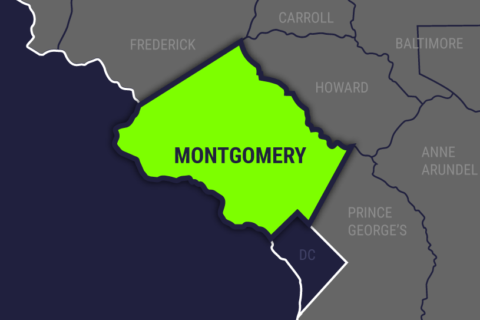ROCKVILLE, Md. — Buffering. Dropped calls. Images that don’t get downloaded. Cell providers and the contractors who work with them are working to make sure those moments become less frequent for customers as more people use mobile devices that go beyond the smartphone.
In order to add broadband capacity, cell providers are considering adding antennae to existing cell towers. Marjorie Williams, manager of Montgomery County’s Office of Broadband, Cable & Franchise Division in the Department of Technology Services — often referred to as the “cell tower committee” — told a county council committee Monday that there were applications for as many as 700 antennae from as many as 15 different carriers already in the pipeline in this year alone.
All of those applications come from companies anxious to provide access to residents looking for an on-ramp to the digital superhighway for their cellphones, tablets and an increasing array of wireless devices.
Crown Castle, a company that provides wireless infrastructure, has applied to get more than a hundred new antennae in parts of the county. The company wants to put them on new mini-monopoles, which are cell towers about 30 feet high and 8 inches in diameter.
Crown Castle’s plan would dot sections of North Potomac, Gaithersburg and Germantown with 120 antennae.
At a Monday work session, Montgomery County Councilman George Leventhal asked a panel why there was a rush to put these in place. “What’s the emergency here? Why do we have to do this so rapidly?” he asked.
“Because of kittens,” joked his colleague on the committee, Councilman Hans Riemer.
“Kittens?” a puzzled council staff member asked.
Council President Nancy Floreen explained, laughing, that Riemer was referencing the craze for kitten videos on the internet. Getting serious, Riemer explained that demand for video and other data-laden content on the internet is behind the push for more digital capacity.
On the other hand, many Montgomery County residents like Andy Spivak of North Potomac don’t want these cell nodes in their front yards. Spivak said he was alarmed by a plan that would change the county’s zoning laws so that the process to put up new antennae and newer, smaller monopoles in the county’s rights of way — those strips of land between a homeowner’s property and the street — would be streamlined, making it easier for the companies to construct the towers and harder for residents who objected to have a say in the process.
During Monday’s meeting, Riemer, Floreen and Leventhal agreed: Too many questions remain about finding the best way to add capacity without cutting residents out of the discussion and ending up with a forest of cell towers.
Spivak, who generated a petition fighting the zoning text amendment, said he was pleasantly surprised. But he’s not relaxing just yet. “I do honestly believe that but for the groundswell of opposition behind it, all of this might have been just pushed through,” he said.
Mitsuko Herrera, cable communications administrator in the county’s Office of Cable and Communications Services, said the county is watching out for residents because the county sought to put antennae on existing poles. “We want to limit the proliferation of new facilities,” she said.
But at the same time, Herrera said, capacity will be important for the future.
“Having clothing that is smart and knows when you’re hot or cold and adjusts, or having a bed that has a sensor in it and knows when you’ve fallen asleep and then turns off the TV — all of these things are going to grow demand and what we are trying to do is to be ahead of the curve,” Herrera said.
Floreen’s committee is expected to take up the issue again, but, so far, no date has been announced.







